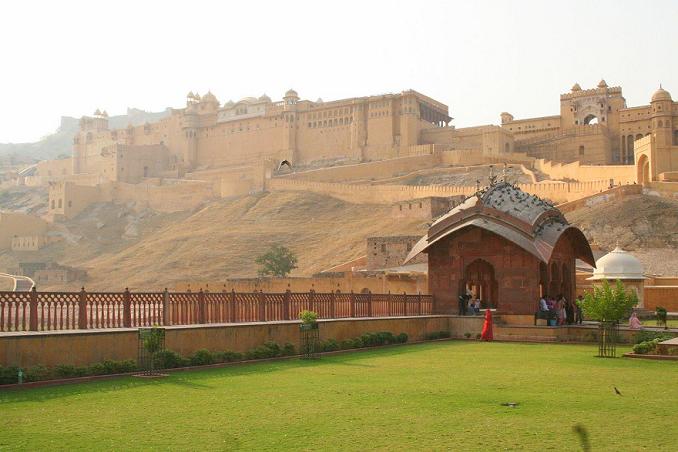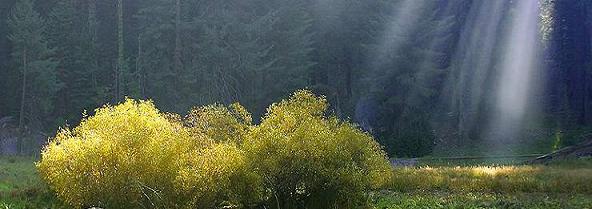
Home About Us Contact Us India Tourism
Welcome to www.pinkcity2india.com
My Jaipur
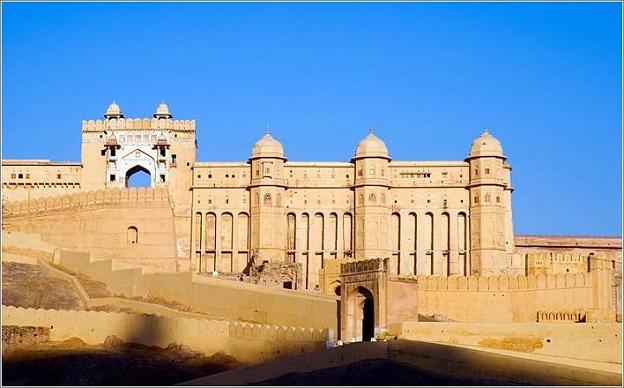
|
Rajasthan's beautiful Pink City Jaipur, was the stronghold of a
clan of rulers whose three hill forts and series of palaces in the
city are
important attractions. Known as the Pink City because of the
colour of the stone used exclusively in the walled city, Jaipur's
bazaars sell embroidered leather shoes, blue pottery, tie and dye
scarves and other exotic wares. Western Rajasthan itself forms a
convenient circuit, in the heart of the Thar desert which has
shaped its history, lifestyles and architecture.
Founded
in AD 1727 by Sawai Jaisingh II, Jaipur the capital of
Rajasthan is popularly known as the Pink City with broad avenues
and spacious gardens. The capital of Rajasthan, Jaipur is steeped
in history and culture. Here the past comes alive in magnificent
forts and palaces, blushed pink, where once lived the maharajas.
The bustling bazaars of Jaipur, famous for Rajasthani jewellery,
fabric and shoes, possess a timeless quality and are surely a
treasure-trove for the shoppers. This fascinating city with its
romantic charm takes you to an epoch of royalty and tradition. 
Jaipur's architectural planning may have been ancient, but its execution was definitely modern. Best represented by the City Palace complex, it brought together all that was excellent in Rajput and Mughal architecture, creating a new tradition that found wide currency over much of north India. As in the Mughal tradition, the durbar or court areas became much more open, characterised by a series of arched pavilions held on delicately crafted pillars. Ornamentation had always been a part of the state's architectural heritage, now it became much more opulent. The private wings of the family also extended their entertainment areas. Since defence was no longer a primary concern, larger, more ornamental windows were built to over look the streets or courtyards outside these wings. Gardens were no longer planned within the internal courtyards only, but were added to the external vistas, and water, a basic feature of Mughal palaces and gardens, was utilised in a similar fashion, in canals and fountains.
Jaipur has much
to offer visitors everything from pageants and festivals to
extraordinarily clad people, a wealth of handicrafts, a royal
legacy of palaces, and sightseeing that will occupy their time.
However, should the visitors simply choose to walk around the
streets of the old city instead, they will not regret it. All of
Jaipur is an architectural gem, and no scheduled sight seeing can
even hope to do justice to this rare city.
Flight Information & Time-Table Train Information & Time-Table |
||||||||||||||||||
| ||||||||||||||||||
The Ganesh Pol
Ganesh Pol is a fine portal covered with paintings. It was built by Sawai Jai Singh. This gateway provides access to the inner court in which the principal apartments of the king are situated and everything is in marble.
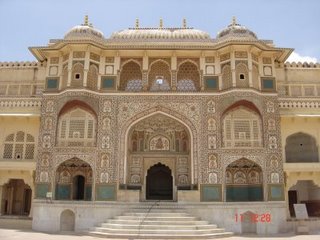 |
 |
The Four Gardens
Diwan-i-Khas or the Hall of Private audience was constructed during the period of Mirza Raja Jai Singh and it is also called Jai Mandir, and because of the beautiful mirror glass work in it, it is also called as Sheesh Mahal or the Glass Palace. The mirror pieces were specially imported from Belgium during that period. The Raja met his special guests here. In front of the Sheesh Mahal is a parterred little garden in the classic Mughal pattern called Char-bagh or Four Gardens.
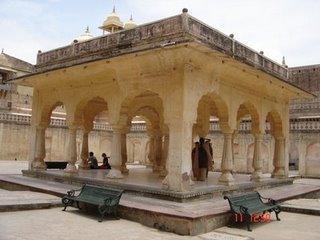 |
 |
